Introduction
The northeast region of India has been inflicted with long-standing separatist insurgencies. Since the 1950s, this region has witnessed frequent ethnic conflicts as well as insurgent violence. In the recent past, the overall situation in the region has significantly improved, although the security challenges remain present. Over the past few decades, illegal drug trafficking from the Golden Triangle via Mizoram and Manipur has been a serious concern for India. Golden Triangle, a geographical area infamous for its illicit drug trade, encompasses portions of Myanmar, Laos, and Thailand. It is one of the global hubs of opiate and methamphetamine production and the largest producer of narcotics in Southeast Asia. Manipur, being the border state with Myanmar, which is a part of the Golden Triangle, has made this State vulnerable and prone to the illicit trafficking of drugs and narcotic substances. The geographical characteristics of this region, accompanied by active insurgent groups, provide a space for the nexus between insurgent organisations and transnational drug syndicates, which have serious implications for the internal security of the northeastern region of India. As many insurgent organisations lose their bases due to the scarcity of funds, they are getting comfortable with having a nexus with narcotic dealers to sustain their operations and existence. The prevalence of insurgency and a militarised counter-insurgency response have also shaped the development of correlated issues such as an economic dependency on smuggling and illicit trade, widespread undocumented migration, large-scale illicit drugs, and arms trafficking. [1]
The Golden Triangle: A Hub of Illicit Drug Production
Golden Triangle region, since the 1950s, has emerged as a prominent hub for opium cultivation globally. The confluence of historical, geographical, and socio-economic factors has contributed to the emergence of the narcotic trade in Southeast Asia. Opium has a deep-rooted history in Southeast Asia, particularly in the context of colonial rule in India. The Golden Triangle’s rugged terrain and porous borders have facilitated the cultivation and trafficking of illicit drugs. The region’s geographical features make it difficult for law enforcement agencies to monitor and control illicit activities effectively. [2] Social-economic factors, such as poverty and lack of alternative livelihoods, are key drivers of opium cultivation in the Golden Triangle area. Many farmers turn to opium cultivation as a means of escaping poverty and supporting their families. [3] Another important factor that contributes to the narcotics trade in the region is weak governance. In the case of Myanmar, political instability and armed conflict have created an environment conducive to the drug trade. Insurgent groups and militias often control territory where opium cultivation and drug trafficking occur. [4]
In its report for 2023, the United Nations Office on Drugs and Crime (UNODC) emphasised the availability of the synthetic drug [5] market in the Golden Triangle. Large quantities of methamphetamine, ketamine, and other synthetic drugs continue to be produced and trafficked globally from the region. Myanmar is said to be the origin of almost 90 per cent of opium used in the Golden Triangle. Additionally, the use of methamphetamines, popularly known as Meth, is becoming prevalent in the Shan State. Meth produced in the region mainly comes in two forms: pills, known as “Yaba”, and crystal meth, or “ice”. [6]
Insurgency and Narco-Trafficking in Manipur
The history of Manipur has been dismal and flawed due to several factors, including ethnic conflicts, separatist or insurgency movements, narco-trafficking, and inadequate development of the region. Since the beginning of the insurgency in the 1950s, many insurgents surrendered and joined the mainstream with a collaborative effort between the Centre and State governments. However, some insurgents continued with the insurgency. Among other States in the northeast, Manipur has the maximum number of active insurgent groups. [7] The United National Liberation Front (UNLF) was the first group to be founded and remains one of the most active groups in the Valley to date. However, another insurgent group— Kuki-Zo, and its manifestations are active in hilly areas. Meitei and Kuki insurgent groups in Manipur have continued to hold on to their separatist demands. Over the years, the insurgent groups in the northeast have gone through a significant shift in ideology— from revolutionary, inspired by Communism, to terrorist-cum-organised crime syndicate (OCS), generating finances mainly through extortion, arms, and narco-trafficking. Through intimidation, these insurgent groups gain locals’ support coercively. [8]
As Southeast Asia nations such as Singapore, Malaysia, and Indonesia implemented stringent measures against drug trafficking, Manipur became an alternative route during the late-1970s and early-1980s because of its geographical closeness to the Golden Triangle. [9] By the late 1980s, though there was hardly any opium production, it became a consumer State. [10]
Routes of Trafficking in Manipur
The geographical proximity of Manipur with the tri-junction of opium-production regions, especially Tiddim, Kachin and Shan hills in Myanmar, provides easy access for drug smugglers to transport narcotics to the different parts of India via Manipur. Both Behiang and Moreh are entry points for the inward movement of drugs to Imphal in Manipur, from where the consignments are further sent to Kohima in Nagaland. [11] From Kohima, the drugs are sent to Dimapur and further transported to Assam via the rail network for widespread distribution in India. [12] The porous border and the lack of formal economic structures have thus reinforced a dependency on illicit and criminal activities to make ends meet for local communities. [13]
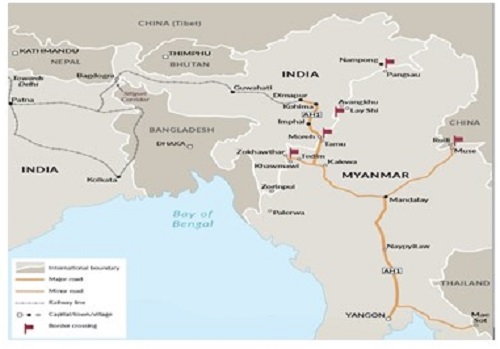
Interconnection between Insurgency and Drug Trafficking
Manipur shares a 398 km border with neighbourhood country Myanmar, allowing transnational criminal organisations to facilitate illegal drug activities with the support of Manipur’s local insurgent groups, which can be described as “narco-insurgency”. Insurgency in Manipur, coupled with ethnic violence, seems to be a never-ending contention for the central government. Moreover, these insurgent groups are often accused of having links with transnational organised crime, such as the illegal trafficking of drugs and making Manipur a transit hub. At different levels, insurgencies in the North-East region have been supported by external forces, including Myanmar and China. Myanmar is considered a haven for these organisations. In recent decades, Myanmar has been a conflict zone with an adverse effect on its economic growth. In recent years, Myanmar has emerged as the largest producer of illicit drugs in Southeast Asia, and the drug trade has become one of the integral factors of the country’s political economy.
Insurgent organisations needed a sizeable amount of funds to carry out their operations. Due to the significant push of welfare programmes and strategic operations, most insurgent organisations are losing their base and people’s support in the region, mainly Manipur. These groups require a sufficient and consistent stream of funds to sustain their organisational structure and for carrying out their operations to achieve propaganda/political goals. Since it is challenging to acquire that sum of money on a quick basis, these organisations approach drug traffickers in the Golden Triangle region for cooperation. Instability in Myanmar has also created a conducive environment for such transnational activities. Within this context, the nexus between insurgent groups and transnational crime organisations has profound security implications for the entire North-East region.
The report, titled “Southeast Asia Opium Survey 2023: Cultivation, Production and Implications”, highlighted an 18 per cent increase in cultivation from 40,100 to 47,100 hectares during the second growing season after the military coup in Myanmar in 2021. At 1,080 metric tons in 2023, the potential yield is at its highest since 2001, making Myanmar the world’s largest source of opium. [15] In a report by Manipur police, it was revealed that Rs 142 crore worth of drugs were seized, and over 764 persons were arrested during the period from 20.03.2022 to 13.05.2023 under the Narcotic Drugs and Psychotropic Substances Act (refer to Table 1). These data suggest an interdependence where increased drug production in Myanmar is directly proportionate to the seizure of drug substances in Manipur.
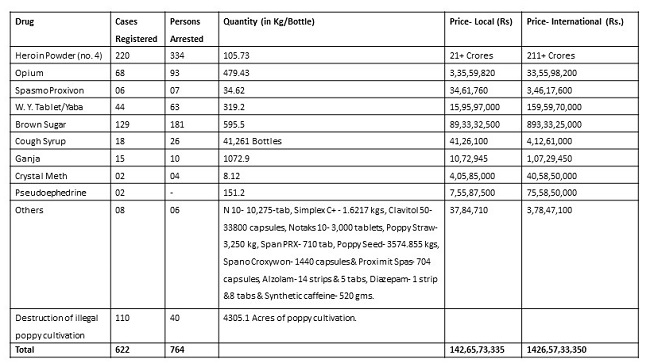
One of the NGOs in Manipur— People’s Alliance for Peace and Progress (PAPP) reported that—
“The Kuki militants and drug mafias are taking advantage of the shifting drug activities (poppy plantation and drug manufacturing) from the Golden Triangle, especially the Shan State in Myanmar, to the Indo-Myanmar border towards the Chin and Kachin States of Myanmar neighbouring India. The Kuki militants controlling these areas, as also the adjacent areas in Manipur and Mizoram, are emboldened by suspension of operations to indulge in illegal poppy cultivation and drug trade to raise huge financial resources”. [17]
During an investigation of a drug-seizure case, it has come to light that cadres of insurgent groups like Chin Kuki Liberation Army (CKLA), United Tribal Liberation Army (UTLA), Kuki National Organization (KNO), Zomi Revolutionary Army (ZRA) are involved. For instance, on 16 October 2023, the commander of a Kuki insurgent group that had signed a ceasefire agreement with the Manipur government was arrested for alleged drug trafficking in the State. [18] After a few days, security forces arrested two insurgents of the non-Suspension of Operations group— Chin Kuki Liberation Army (CKLA), from Chaljang, Churachandpur district, and seized several arms and ammunition, along with 2.5 kg of opium and cash from their possession. [19] It is also important to note that during searches, the authorities seized drugs along with arms and ammunition; such cases highlight the narco-insurgency nexus (see Table 2). There is a notion about a consensus between the drug syndicates in Myanmar and insurgent groups in Manipur, where the latter may also play the role of facilitators and drug couriers.
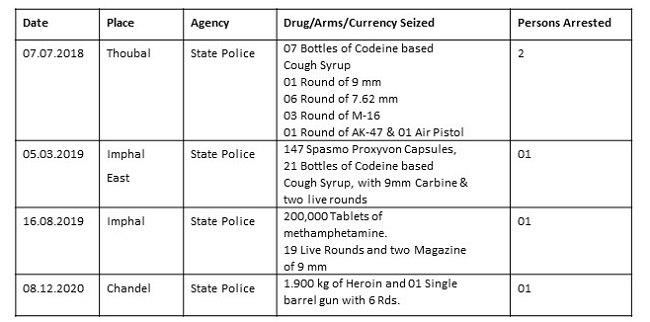
Challenges Ahead
Several factors, such as a surge in drug influx, ethnic strife, and insurgency, along with other socio-economic indicators, subsequently led to an increase in the abuse of drugs among the youth in the State. This addiction to drugs became an epidemic in the form of HIV/AIDS, primarily because of the sharing of injections during drug abuse. Injecting Drug Users (IDUs) has become a significant driver of the mentioned disease. The highest adult HIV prevalence in 2022 is found to be in the northeastern states of Mizoram (2.34 per cent), Nagaland (1.34 per cent) and Manipur (0.94 per cent). [21] Between the years 2015-16, one of the major routes of transmission of HIV was through infected syringes and needles, containing 13 per cent of clients and among the different risk groups, the highest proportion of HIV-positive clients were referred by IDU-TIs (52 per cent), according to data compiled by the Manipur State Control Society (MACS).
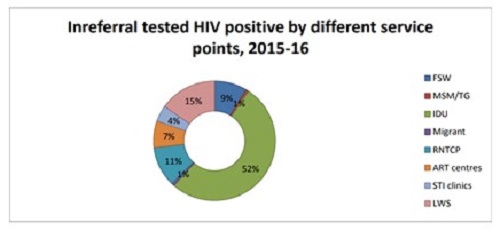
As a part of India’s Act East Policy, the Centre implemented the Free Movement Regime (FMR) in the Indo-Myanmar border, which allows people residing close to the border area to venture 16 km into each other’s territory without a visa has been misused by the insurgent groups to carry out illegal trafficking activities. [23] This FMR also facilitates refugee crises across the Indo-Myanmar Border. These refugees are a part of the complex web of nexus as they are using illegal poppy cultivation in the hilly forest area as a source of living under Kuki-Chin underground groups. Produced opium is transported to the Myanmar region as a raw material for heroin production and sent back to India. According to Manipur’s Narcotics and Affairs of Border (NAB), in 2017-2023, over 18,664.5 acres of poppy cultivation were destroyed by the security forces, compared to 1889.3 acres between 2013-2016. [24] The Manipur government data source also confirmed that the wave of tensions between the Meitei and the Kuki community members lies in the actions taken since 2017-18 against illegal poppy cultivation in the hill districts. [25] With concern, the Central government finally decided to end the Free Movement Regime (FMR) and construct a fence in the entire region to ensure security.
The nexus also engenders an informal economy. The growth of the informal sector can lead to limited formal trade and impede the region’s economic growth.
Conclusion
The nexus of insurgents and narcotic traffickers is no longer a hypothesis but an emerging reality. Ever since the increase of illegal opium production and its trafficking from the Golden Crescent (an area comprising Afghanistan, Iran, and Pakistan) and the Golden Triangle, the Indian border States in proximity to it have become most vulnerable. This unresolved reality is considered as an impediment to the socio-economic development in these areas and, above all, poses a threat to India’s internal security. In the case of Manipur, recent trends of drug seizures because of the State government’s “War on Drugs” initiative are a reminder to work on constructing a “smart fence” throughout the shared border with Myanmar. As a border State, Manipur is crucial in India’s Act East Policy to build trade relationships with ASEAN countries. However, the State has been ravaged by separatist insurgent groups and has become a drug hub and transit point for transnational organised crime syndicates. Firstly, it was opium, and now it is synthetic drugs like Amphetamine Type Stimulants (ATS), which are presenting a grave concern and challenge to related law-enforcement authorities. Myanmar’s military coup in 2021, followed by a civil war, also gave a boost to cross-border narcotics trafficking. As long as the civil war continues, this will provide a conducive environment for the Ethnic Armed Organisations (EAOs) of Myanmar to get easy money through illegal trafficking and also invigorating themselves with this money just to maintain the status quo. In this context, the proliferation of the narco-insurgency nexus is very much visible in the Indo-Myanmar Border of Manipur. The moment’s need is to advocate a collective ASEAN regional effort to mitigate this widespread cross-border problem.
Endnotes
[1] Ethnic Insurgencies and the Crime-Insurgency Nexus in India’s North Eastern Region. European Foundation for South Asian Studies. (2021, October). https://www.efsas.org/publications/study-papers/insurgencies-in-india-north-eastern-region/
[2] Alfred W. McCoy "The Politics of Heroin: CIA Complicity in the Global Drug Trade." Lawrence Hill Books. (2003).
[3] Ko-lin Chin. "The Golden Triangle: Inside Southeast Asia's Drug Trade." Cornell University Press. (2009).
[4] Carl Trocki. “Opium, empire, and the global political economy: a study of the Asian opium trade 1750-1950.” London: Routledge. (April 7, 2005).
[5] Note: Synthetic drugs refer to substances that are artificially modified from naturally-occurring drugs and are capable of exhibiting both therapeutic and psychoactive effects.
[6] Julia Madureira “Golden Triangle” Drug Trade Booms After 2021 Coup In Myanmar. The organization for world peace. (January 10, 2024). https://theowp.org/golden-triangle-drug-trade-booms-after-2021-coup-in-myanmar/
[7] Rajeev Bhattacharyya. Drastic Decline in Insurgency in India’s Once-Restive Northeast. The Diplomat. (May 09, 2022) https://thediplomat.com/2022/05/drastic-decline-in-insurgency-in-indias-once-restive-northeast/
[8] Ningthoujam Koiremba Singh, William Nunes. Drug Trafficking and Narco-terrorism as Security Threats: A Study of India's Northeast. India Quarterly. (March 2013). https://www.researchgate.net/publication/258142588_Drug_Trafficking_and_Narco-Terrorism_as_Security_Threats_A_Study_of_India's_North-East
[9] Ibid.
[10] Sushanta. Fighting AIDS in Manipur. The Hindu, (August 16, 2005).
[11] Prem Mahadevan. Crossing the Line: Geopolitics and criminality at the India–Myanmar border. Global Initiative Against Transnational Organized Crime. (November, 2020). https://globalinitiative.net/wp-content/uploads/2020/11/Crossing-the-line-Geopolitics-and-criminality-at-the-India-Myanmar-border.pdf
[12]Ibid.
[13] Ethnic Insurgencies and the Crime-Insurgency Nexus in India’s North Eastern Region. European Foundation for South Asian Studies. (2021, October). https://www.efsas.org/publications/study-papers/insurgencies-in-india-north-eastern-region/
[14] Prem Mahadevan. Crossing the Line: Geopolitics and criminality at the India–Myanmar border. Global Initiative Against Transnational Organized Crime. (November, 2020). https://globalinitiative.net/wp-content/uploads/2020/11/Crossing-the-line-Geopolitics-and-criminality-at-the-India-Myanmar-border.pdf
[15] Golden Triangle opium economy sees steady growth in 2023. UNODC Regional Office for Southeast Asia and the Pacific. (Bangkok, Thailand, December 12, 2023) https://www.unodc.org/roseap/en/2023/12/southeast-asia-opium-survey-report-launch/story.html
[16] Manipur Police. First Information of a Cognizable Crime Report Under Section 154 Criminal Procedure Code at Police Station. FIR No. 60872023. (June 27, 2023). https://www.manipurpolice.gov.in/wp-content/uploads/2023/10/FIR-NO.-60872023-IMPHAL-PS.pdf
[17] Dhananjay Mahapatra. Cross-border narco-terror root of Manipur violence: PIL. The Times of India. (May 31, 2023) https://timesofindia.indiatimes.com/india/cross-border-narco-terror-root-of-manipur-violence-pil/articleshow/100631644.cms
[18] Commander Of Manipur Ceasefire-linked insurgent groups arrested with brown sugar. NDTV. (October 16, 2023). https://www.ndtv.com/india-news/lemtinsei-singson-commander-of-manipur-ceasefire-linked-insurgent-group-arrested-with-brown-sugar-by-assam-rifles-4486741
[19] Major Players in Drug Trade. Imphal Free Press. (October 27, 2023). https://www.ifp.co.in/editorial/major-players-in-drug-trade
[20] Parliamentary Questions. Rajya Sabha Unstarred Question No. 1490. Ministry of Home Affairs. (August 2nd, 2023) Retrieved from https://sansad.in/getFile/annex/260/AU1490.pdf?source=pqars
[21] India HIV Estimates 2022: Technical Report. NACO, MoHFW, GoI. (2023). India HIV Estimates 2022 Technical Report.pdf (naco.gov.in)
[22] SIMS Analysis Report, 2015-16. Manipur State AIDS Control Society. (n.d) Retrieved from https://manipursacs.nic.in/media/xusgqur0/sims_annual_report_2015-16-manipur-sacs.pdf
[23] Govt plans to end Free Movement Regime along international border with Myanmar. The Indian Express. (January 3, 2024). https://indianexpress.com/article/india/govt-plans-to-end-free-movement-regime-along-international-border-with-myanmar-9092589/
[24] Manipur Police. First Information of a Cognizable Crime Report Under Section 154 Criminal Procedure Code at Police Station. FIR No. 60872023. (June 27, 2023). https://www.manipurpolice.gov.in/wp-content/uploads/2023/10/FIR-NO.-60872023-IMPHAL-PS.pdf
[25] Vajaita Singh. Beyond Manipur Violence: Drugs and Demographics in Hill Districts. The Hindu. (May 11, 2023). https://www.thehindu.com/news/national/beyond-manipur-violence-drugs-and-demographics-in-hill-districts/article66838704.ece/amp/
(The paper is the author’s individual scholastic articulation. The author certifies that the article/paper is original in content, unpublished and it has not been submitted for publication/web upload elsewhere, and that the facts and figures quoted are duly referenced, as needed, and are believed to be correct). (The paper does not necessarily represent the organisational stance... More >>
Image Source: https://recoverycnt.com/wp-content/uploads/2021/06/AdobeStock_427383373-2048x1365.jpeg



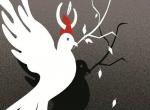




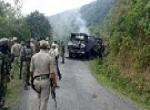

Nice and detail information for research. I am an architecture student planning to do a thesis in manipur to fight against the condition of drug and ethenic unrest there . this research helps alot thank you.
Post new comment